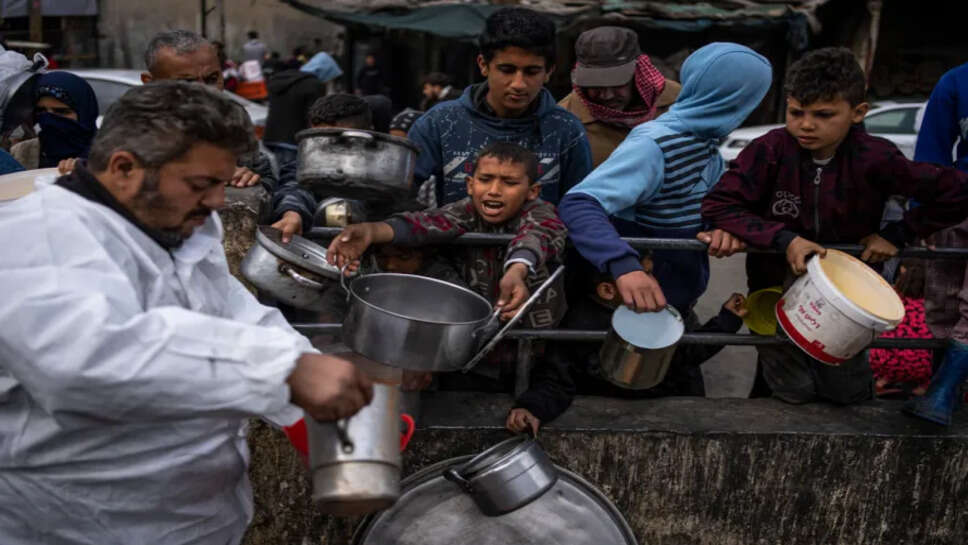Gunfire at Gaza Food Centers Leaves Dozens Dead, Hundreds Wounded in Aid Crisis

Deadliest Day at Food Aid Sites
Monday marked the bloodiest day since the establishment of the new U.S.‑ and Israeli‑supported food distribution system in Gaza. On June 16, at least 34 Palestinians were killed by gunfire as they attempted to reach aid centers operated by the Gaza Humanitarian Foundation (GHF). This spike in fatalities far exceeds typical daily casualties, highlighting an alarming escalation in violence around these sites.
Aid Crisis Meets Security Chaos
For the past three weeks, GHF-managed distribution points have replaced the traditional U.N.-led aid system, purportedly to clamp down on alleged interference by militant groups. However, Palestinians say nothing has changed—they still face starvation, and now they must gamble with their lives just to pick up basic rations.
-
Aid distribution in Rafah began before dawn near the Flag Roundabout—a key junction where thousands congregate.
-
Eyewitnesses describe panicked crowds at first light, scrambling as Israeli troops opened fire.
-
Gunfire erupted from several positions, exacerbating confusion in the predawn darkness.
-
A nearby Red Cross field hospital received about 200 wounded, marking its single most severe casualty surge since the conflict began.
Breakdown of the Tragedy
According to Gaza health officials:
-
33 people were killed near the Rafah distribution center.
-
One more individual died while heading to another GHF hub elsewhere in Gaza.
-
Additional fatalities occurred away from aid sites, raising the overall death toll to at least 34 on that day.
In Rafah, families had walked for hours in darkness, hoping to arrive before crowds swelled. Instead, shots rang out just hundreds of meters from the aid site.
Israel’s Position
The Israeli military maintains that the area was an “active combat zone” and that troops fired on individuals they perceived as threats—or who strayed outside designated safe corridors. Officials further state that some of the firing constituted warning shots, but they have not explicitly confirmed whether these hit civilians.
Humanitarian Response & Backlash
Humanitarian agencies and UN bodies have strongly criticized the GHF operation. They argue:
-
The system effectively weaponizes aid, using it to displace and control civilians.
-
Data indicates hundreds killed and thousands wounded since the new system began.
-
UN partners and NGOs have largely refused to integrate with GHF.
The International Committee of the Red Cross (ICRC) confirmed their Rafah facility handled roughly 200 gunshot wound injuries from aid seekers on Monday—a figure comparable only to the worst single-day mass casualty events witnessed earlier.
Context of Rising Tension
This bloodshed comes amid a broader crisis tone: Israel’s military offensive, launched in October 2023, has resulted in over 55,000 Palestinian deaths, with UN warnings pointing to impending famine. Gaza remains sealed under blockade, with only sporadic aid trickling in since May.
The shift to GHF signals a significant policy pivot. Though U.S. and Israeli sources defend it as necessary for aid security, critics—particularly from the UN—say it undermines humanitarian neutrality and endangers civilians.
Local Anguish & Global Alarm
On the ground, everyday Palestinians face impossible choices:
-
“Starve, or die in search of food,” has become a tragic calculation.
-
Worker maintaining vigil at the Flag Roundabout describes “fire from everywhere” as dawn broke, forcing families to flee.
-
Some risk stepping off the prescribed routes in hopes of reaching aid faster—and pay with their lives.
International criticism has hailed this as a turning point. Observers note:
-
Such lethal incidents are now nearly daily, with accumulating civilian casualties.
-
The UN Secretary-General and human rights leaders describe the new distribution system as morally untenable.
-
Even Israel’s allies have expressed concern about the humanitarian and reputational fallout.
What This Reveals
1. Aid as a Battleground
Humanitarian operations are no longer neutral zones—they have become contested zones where aid seekers face active threat.
2. Policy vs. Reality
Though GHF was sold as making aid safer by sidelining Hamas interference, in reality, it has heightened risks for those in the line of fire.
3. Dark Dawn Routine
What was once a daily journey for nourishment has become a ritual of risk and tragedy, with families racing time—and bullets.
Flashpoints & Future Risks
-
The Flag Roundabout, Rafah’s major gathering point, has become a flashpoint—painting a grim emblem of the crisis.
-
As famine intensifies, more desperate crowds can be expected, increasing chances of clashes.
-
Unless control methods change, further deadly incidents are almost certain.
The Impending Verdict
The world now waits for:
-
Independent investigations into Monday’s shooting.
-
Policy review of GHF’s model, including armed guards and Israeli oversight.
-
Reintegration of the U.N. or other neutral agencies to restore aid access.
-
Safe corridors and timings enforced clearly to prevent crowd buildups.
Human rights groups, UN agencies, and some donor nations are demanding an overhaul—insisting that aid distribution must not come at the cost of civilian lives.
Closing Perspective
Monday’s massacre—34 killed, nearly 200 wounded in just hours—lays bare a grim truth: Under the current aid system, seeking food in Gaza has become a perilous act of survival. What was framed as a logistical shift has instead largely militarized humanitarian aid.
For Gazans, it has turned dawn into a gamble. And globally, it has revealed a humanitarian experiment that risks backfiring violently—unless urgent reforms are enacted.
.jpg)